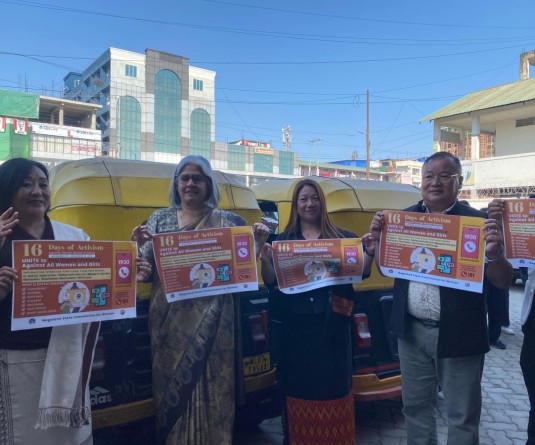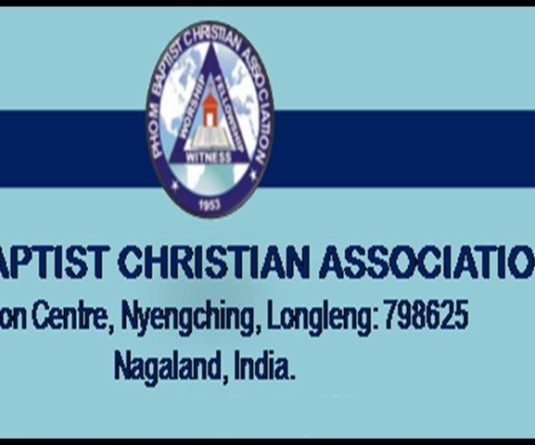
Neidonuo Angami & Khesheli Chishi join hands in sharing stories at The Morung Lecture
Morung Express News
Dimapur | June 25
Any peace process begins at home. Busting the myth that a ‘peace process’ is a one-time-act between armed actors (state and non state), veteran rights activists, Neidonuo Angami and Khesheli Chishi together clarified today that peace is a continuous process that begins from home winding its way into neighbourhoods and other larger communities. Angami and Chishi were speaking at the 4th edition of The Morung Lectures at the Dimapur Ao Baptist Arogo’s Elim Hall on June 25, building on ‘Stories of Women in Peace.’ Many years ago, each of their journeys began as mothers, later recognising their role as peace makers.
From drug addition to armed feuds
Naga history has been dotted with narratives of men producing violence and women undoing them through nonviolent means. Its colours have merely transformed today from the political to the legal.
The Naga Mothers’ Association (NMA) began in 1984, thus, as a response to the rise of drug addiction in Naga society. Neidonuo Angami, a founding head of the NMA (she led the NMA in various capacities from 1984-2007), while speaking at The Morung Lecture today, charted their role as mothers in working with state institutions as well as civil bodies to control drug trafficking.
At the time, they neither knew the meaning of the term “peace makers” nor “de-addiction” but took up the journey anyway, slowly creating their own path towards peace. With the help of other organisations and individuals, the NMA conducted extensive research and set up a rehabilitation centre. Eventually finding the need to “nurture our human resources,” the mothers were faced with a new challenge: the production of “unidentified dead bodies” in the early 90s resulting from extensive factional feuds—how can dignity be restored?
At this stage, Angami shared, the NMA wrapped these unidentified bodies of young men in Naga shawls to give them a dignified end—the mothers did not know who they were, and neither factions nor families came forward to claim them. A day of mourning (August 5, 1994) was set aside for the unidentified dead. From this, emerged the NMA’s nonviolent campaign on ‘Shed no more Blood’ that actively pursued unity and reconciliation among Naga political groups, with the aim to “bridge the gap” between them.
Bridging the gap, from India to Burma
This attempt led the Naga mothers to traverse the treacherous terrain between India and Burma, in other words the divided Naga territories, to bridge gaps.
Khesheli Chishi, whose work towards peace and reconciliation continues with such bodies as the Indigenous Women’s Forum of North East India and the Forum for Naga Reconciliation, was also one of the leaders of the NMA from 1997-2010. After the signing of the ceasefire between the NSCN (IM) and the Government of India in 1997, the mothers decided to expand their work, but challenges like the Armed Forces (Special Powers) Act curtailed their free movement.
“Men folk were unable to take (peace) messages from one group to the other, so we stepped in to do the task,” said Chishi while sharing her experiences at The Morung Lecture today. In 1999 after a consultative meeting called by the NSCN (IM), a 4-member NMA team trekked all the way to Burma from India to convey the message of peace and reconciliation to the NSCN (K) chairman, SS Khaplang.
She recounted the ordeals faced by the NMA members while undertaking the 3-day trek from Arunachal Pradesh to the NSCN (K) headquarters in the deep jungles of Myanmar at a time of limited communication technology and rugged recording mechanisms.
She also disclosed the initial scepticism, followed by listening, shown by Khaplang to the peace effort initiated by the Naga Mothers. In 2002, NMA members undertook a second trek to the NSCN (K) headquarters. “This time (second trek) the NSCN (K) chairman was happy and was anxiously waiting for us,” Chishi said.
Their efforts led to the NSCN (K) coming close to reconciliation with the other groups, creating the space for dialogue. Chishi also expounded on the role of Naga women in bridging divides between neighbouring communities, with particular focus on neighbours in Mizoram, Manipur, Assam and Meghalaya to spread the message of peaceful co-existence.
Peace is a process
In the question hour and interactive session, participants at the Lecture, comprising mostly women, sought answers and advice on the role of women in peace building.
For many young women, this was the first time they had heard any of these stories, or had any human interaction with the Naga Mothers’ Association. In a society run predominantly by men, women’s narratives, a large part of it affiliated to peace building efforts, almost never break the surface.
But this should not discourage women to actively partake in peace building. “Peace making is a process and now there are many more political groups than before which means more efforts towards peace should be made than before,” noted Neidonuo Angami while responding to a young participant’s questions. “You are all part of the NMA,” she reminded the audience. “We have started the process and it must continue. First we must find our role as peace makers and then make them understand this role,” she reiterated.
Khesheli Chishi highlighted the role of women’s Hohos in their respective regions that became the shield for men in the most violent of times. “It is up to us,” she noted, if the peaceful space created as a result of these efforts continues to remain or turns violent once again. Building trust and a culture of sharing between the old and young, she reminded, is key to nurturing the space for peace.






